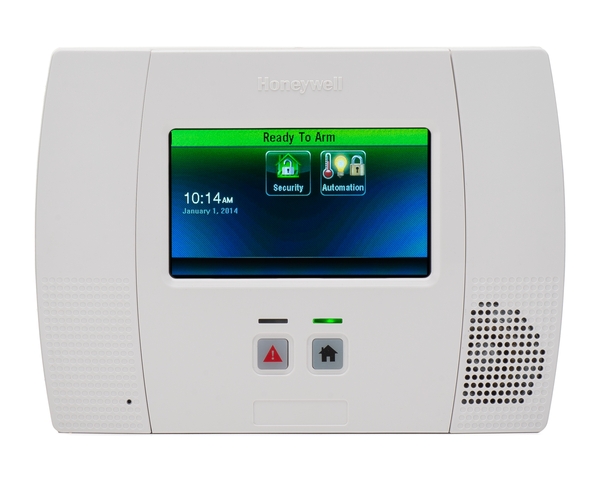
10 years ago Yelp was founded. One of the earliest players on the Web 2.0 scene, Yelp was a bit of a revolutionary concept. Users would get online and tell other users what they thought of a company. Ten years later, the idea doesn't sound very absurd - it's just sort of something that happens everyday.
Why mention it in a post about Alarm Grid's birthday?
Well, 10 years after Yelp's launch, I think it's hard to disconnect Alarm Grid's business model from the incredible online revolution that Yelp began. Yelp is not our favorite review site. They make it hard for our users to write reviews that show up. If you see our Yelp page, you'll notice that 33 users have had reviews filtered. We have two reviews that have stuck. Not to mention Yelp is regularly criticized for their practice of what appears to be a pay-to-play model. They regularly call businesses asking them to advertise on the site, promising that the advertising will lead to more reviews (which are going to be filtered). The practice has led to lawsuits that Yelp basically always wins. After all, filtering your reviews, then calling you to tell you that paying them money to get more reviews is a good way to get reviews to stick sounds an awful lot like infamous mafia extortion attempts, "I'd hate to see your store burn to the ground. The evidence is on their side.
As the marketer on Alarm Grid's team, I can say with quite a bit of confidence, that while Yelp's reviews are filtered, and Yelp's pitch for advertisers to get on-board sounds extortion-y, their reviews are generally pretty trustworthy. And despite appearances, the accusations about their pay-to-play model are pretty unfounded. I've worked with companies that bought ads and companies that didn't. In both cases, reviews are hard to get to stick.
Yelp's review filter is a mean and ruthless God, albeit a fair one.
But that's not really why I'm writing this. Yelp's business model is their business. The reason I wanted to write about Yelp has more to do with the philosophy of Alarm Grid, and why we owe a lot of who we are these days to what Yelp did 10 years ago. The reason Yelp makes it hard for reviews to be included on pages is because the recognized how important those reviews were as a signal. For years, businesses were putting up fake reviews - a problem that persists to this day for almost every review site. While lots of businesses do their best to cheat the system. We are proud to say that we are able to trace back every single review we have been given to one or another customer of Alarm Grid's. Some of them were people who we helped set up a system, and others were random people who needed help with their system because their current company refused to do it, and who left us a review because they were so blown away with our service and attitude (and even a little impressed with the humble knowledge exhibited by the Alarm Grid staff).
Yelp started long before there were really any credible review sites online. I suppose you had Zagat back in the day. But they were independent. The idea that we could trust people to leave honest feedback, and more than that, that companies could trust in the intellect of their shoppers to sift through both lies and truth and make good purchasing decisions was novel. Nowadays, we take it for granted. A lot of companies still don't quite get it. Just last week the New York Post wrote an article about a New York hotel that charges their wedding guests $500 if someone in their party leaves a bad review. When the internet got wind of the practice, they stormed the bastille and left hundreds and hundreds of 1-star reviews on their Yelp page. It's not entirely fair. Many of these reviewers have never stayed at the hotel or experienced the service, but it speaks to the how sacred the right to review freely is taken by what we might go so far as to call the Yelp generation.
This is something we recognized at Alarm Grid early on. We believe very strongly in allowing the free voice of those whom have experienced our service to be heard loud and clear. Why? Because the entire goal of Alarm Grid was to be helpful and courteous and to help you do what you need to do to get your security system up and running. It's a model that can only exist in a world full of reviewers. First and foremost, we do our best to be and pass on competence. Occasionally, (as I'm sure some of you know) we make a mistake. When we do, we do our best to rectify the mistake and move past it. If you look at our reviews, I think you'll see that they reflect our service-centric corporate attitude. We believe that most of the people who come into contact with us will be so blown away with the level of service they receive, that over the long-term, it will be very difficult to find many people with a bad thing to say about us. We don't promise it won't ever happen - you can't please everybody - but we do try our darndest.
There are a lot of amazing milestones we've reached in the last two years. For one, we have built one of the fastest growing, most watched security system channels on YouTube. While the cynical may look at Justin Bieber's more than 2 million subscribers and laugh at our piddly numbers, we will proudly stand by our 1,000 subscribers. The channel itself has amassed more than 200,000 views since it's inception. More than 12,000 hours of footage have been watched by all of you during that time - that's more than 500 full days worth of time have been spent watching Alarm Grid. What does that mean? If you divide that into 8 hour workdays, more than 1500 days of work have been spent watching Alarm Grid's youtube videos. We count that as a huge success. Those views represent hundreds and thousands of people whose lives we have made better since we started this company. I can't even tell you how amazing that feels for us as a team.
Earlier this year, our Facebook page crossed the 2,000 likes threshold. Again, those aren't Justin Bieber numbers, but that's pretty incredible for something as boring as a security company. We're small, and our users are passionate, and we believe that our user base is the key to our success. As long as all of you are satisfied, we can continue to bring in new customers. More customers means we can grow our staff, more staff here means very simply, you get better service.
We have gone from being completely obscure to one of the most exciting brands in the DIY security industry. We are mentioned all over forums, blogs, and the occasional, surprising internet crevice. Every day, we as a team marvel in awe at this business that you have helped us build. Alarm Grid has become much bigger than any of us that work here, and any of you whom we monitor. In a lot of ways, other home security companies have followed suit - copying us move for move. We have been trendsetters, and we hope that all of you that took the risky plunge by allowing a security company that had been opened for less than 2 years understand how important you are to us.
We're really really proud to be celebrating our second year. Yelp has been building their company for 10 years, we have been building ours for 2. We're incredibly honored by the amazing customers that have given us the chance to serve them. And we're happy to say that we're ready to take on even more in the coming year. So tell your families and friends. Get them on board, let them know who we are. Don't keep us a secret. We believe that being treated well by your alarm company is a human right as important as life, liberty, and the pursuit of happiness. And besides, we want to make sure we make it through our terrible twos and right into our third anniversary.
 The main reason to use the Qolsys IQ Hardwire 16-S is to use hardwired security sensors with the Qolsys IQ Panel 2 System. This works by connecting any hardwired sensors directly to the Qolsys IQ Hardwire 16-S. The converter will then send a 319.5 MHz signal to the IQ Panel 2 System on the behalf of the hardwired sensors. By doing this, each hardwired sensor will be able to use its own wireless zone on the system. As the name implies to 16 wired sensors can be connected with the IQ Hardwire 16-S. If a user doesn't need this many terminals, the IQ Hardwire 8-S provides identical function.
The main reason to use the Qolsys IQ Hardwire 16-S is to use hardwired security sensors with the Qolsys IQ Panel 2 System. This works by connecting any hardwired sensors directly to the Qolsys IQ Hardwire 16-S. The converter will then send a 319.5 MHz signal to the IQ Panel 2 System on the behalf of the hardwired sensors. By doing this, each hardwired sensor will be able to use its own wireless zone on the system. As the name implies to 16 wired sensors can be connected with the IQ Hardwire 16-S. If a user doesn't need this many terminals, the IQ Hardwire 8-S provides identical function.














